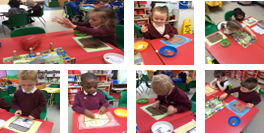Traditional Tales - The Three Little Pigs
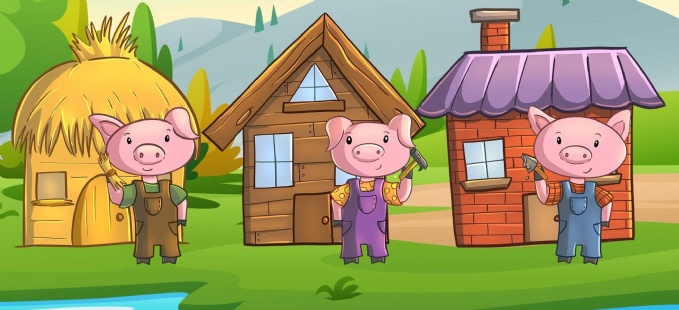
We started our Traditional Tales topic by finding out that a traditional tale is an old story people had shared by telling each other, so there are different versions of the stories with many details the same, such as the characters and setting, but also differences. We collected together all the traditional tales we could find in our class book box to enjoy sharing with each other. Our first tale was 'The Three Little Pigs'.
Here we are finding different versions of the story of The Three Little Pigs'. We made a collection on our windowsill along with some soft pigs which we used in lots of our pig-themed activities!
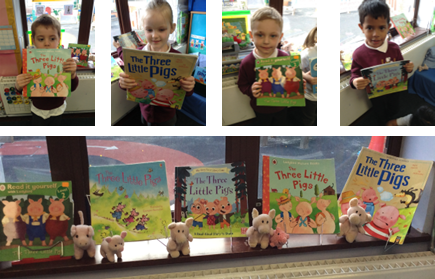
After reading and watching some versions of the story we knew the features that were the same in the story and worked as a class to create a story mountain. This helped us to sequence the events in the story and to retell it.

We set up our small world area with the straw, sticks and brick house and had 3 Little Pigs and a Wolf made for us by Miss Ellana! The pigs were very cute and the wolf didn't really look that big or bad as he had a smiley face! We loved playing with them to retell the story. He might not be a big bad wolf, but he is cheeky - just look at him trying to get down the chimney!

We became authors and illustrators when wrote our own versions of the story of The Three Little Pigs in mini books.
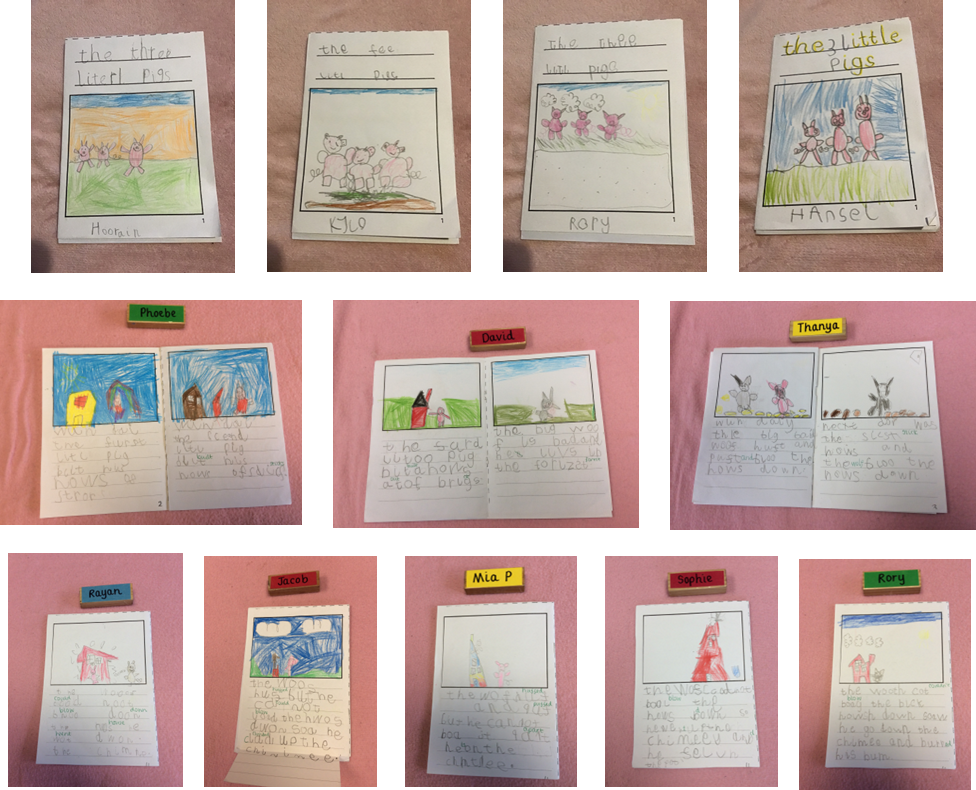
Our role play area became a construction site where we could practise our construction skills! There were hard hats and hi-vis jackets which we had to wear before we went into the construction site. When we had our safety gear on we could build with foam bricks or wooden blocks and could use the tools and wheelbarrow.
We were very busy as you can see!
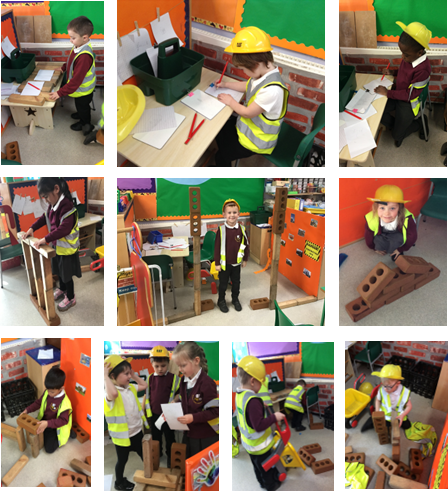
We also became building inspectors looking for different materials used on our school building and ticking off what we had spotted on a checklist.

We were keen to look at the building materials that The Three Little Pigs had used to make their houses and created these collage houses. First we drew around templates with a different shape for each house, then we painted them, added a numbered door and the correct number of windows on the first, second and third house, and finally we added some real straw, wooden sticks and pieces of card that looked like bricks.
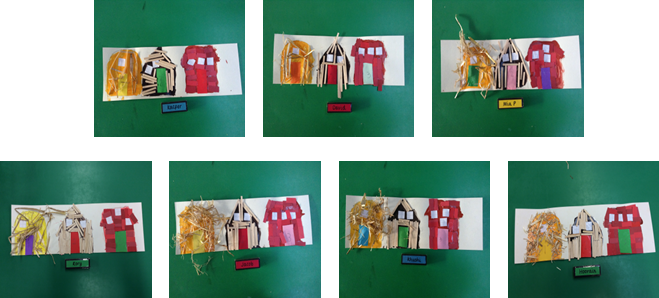
We worked in our colour teams to try out some of these building materials and make houses for pigs. We could choose from different materials and shared our ideas with our team to decide what to do and share our the tasks between us to finish our constructions on time! Once we had all completed our houses it was time to test them out by spraying on water to see if our pigs stayed dry inside, and most importantly, we needed to see if they could withstand huffing and puffing! The Wolf (a hairdryer) tried to huff and puff and blow the houses down!
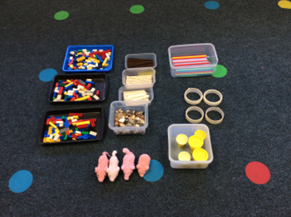
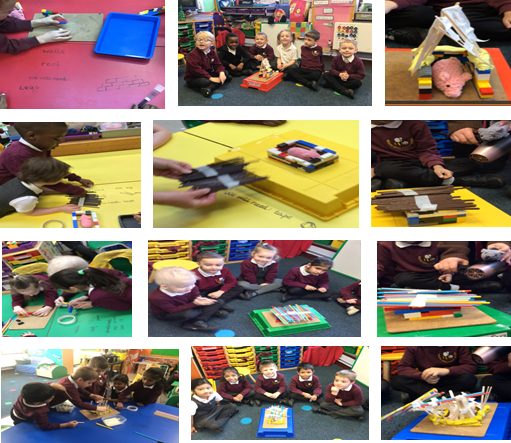
We did a science investigation to find out what everyday objects could be moved by huffing and puffing. We predicted which objects we thought could be moved and which ones could not be moved, then tested out our predictions using huff and puff power from squeezy bottles! Afterwards we compared our predictions with what we found out.
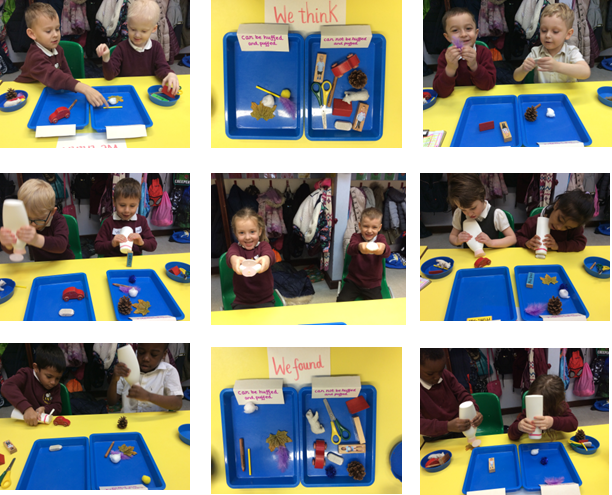
We watched a video about making playdough and stone walls then adding a stick roof and had a try ourselves. We needed lots of resilience to keep trying!
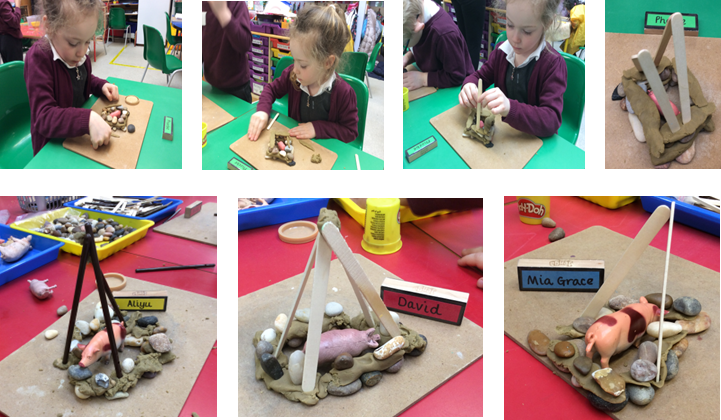
Here are some examples of other materials we used to make houses - Sticklebricks, sugarcubes, foam blocks, Megablocks, Magnetic Polydron, Clixi and wooden bricks. Each time we had to make sure the houses we made were large enough to fit a pig inside to keep them safe from the wolf!

For this challenge we worked with a partner to make a structure from cocktail sticks, which we joined together using mini marshmallows. We needed plenty of patience but kept on going until our structures were complete!

Here we used straws, playdough and masking tape to build homes for pigs. We had to try out different methods and change our ideas when things didn't go to plan.
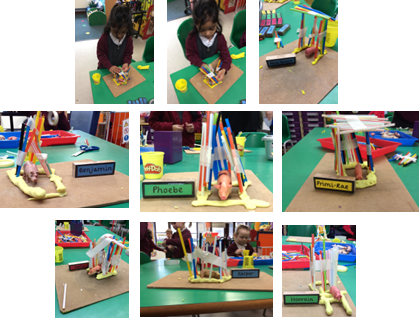
To practise our bricklaying skills we used wooden blocks as our bricks, shaving foam as our cement, and paint tools as our trowels. We had great fun scooping up cement and spreading it on the bricks to make a mini wall.
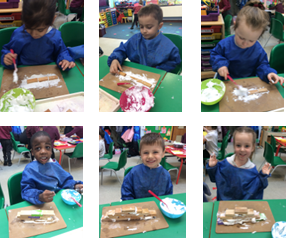
We then used these skills when constructing houses for pigs, and when we made walls outside using foam bricks or Plasbrics. Good teamwork Antelopes!
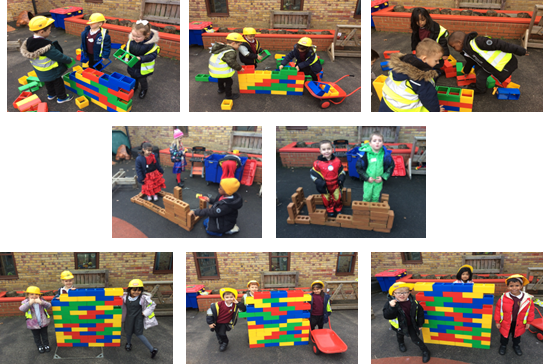
We also tried out building sandcastles outside and used the digger and dumper trucks to move around bricks.


We made 2d and 3d playdough pigs and paper plate pig masks too.....
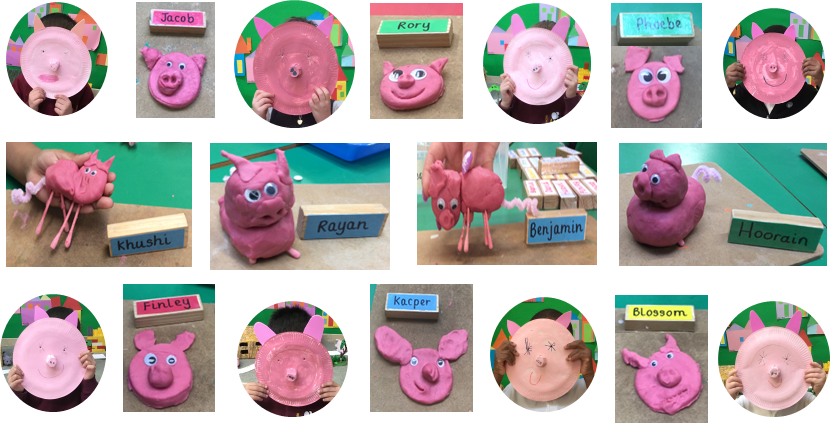
......and each painted a pig and added the features using stickers and felt tip pens.
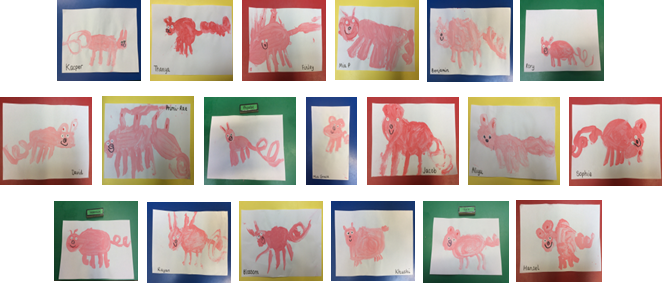
We didn't only make pigs though - look at our wolves. Don't they look sneaky!
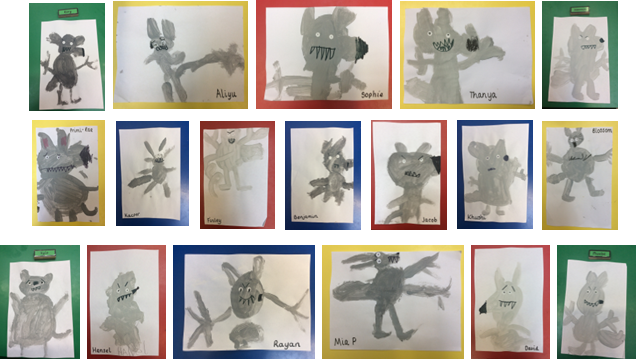

Outside we tried out an obstacle course where we were trying to escape the wolf....
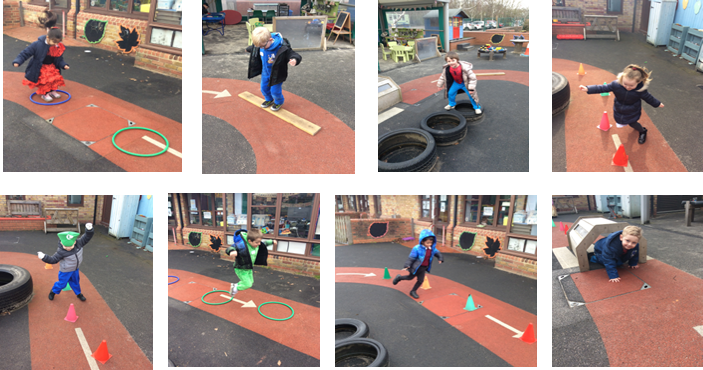
....and we learnt how to play 'What's the Time Mr Wolf?'

In our fine motor sessions we did Three Little Pigs jigsaw puzzles, copied lollystick house shapes, made Lego towers and did some threading.

In our maths work we explored making 10, so built walls using 10 Lego bricks or taped together 10 sticks, put 10 bricks into a 10s frame using tweezers, and counted out 10 matchsticks which we put into a pot of playdough to support a roof (the lid of the pot).

We split a number of bricks into two sets.......

.....and used our subitising skills to match numbered pigs with the dot patterns on the door of their houses.

We also used our subitising skills when we played a dice game. We rolled the dice, moved around the track and collected pieces we needed to complete our houses - doors, windows and a chimney.
